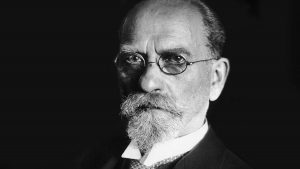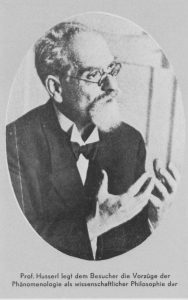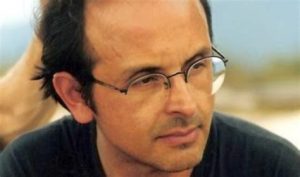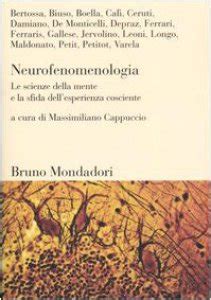The mind-body problem in phenomenology and its way of overcoming it
The problem of the relationship between mind and body is central to Western philosophy, at least starting from Descartes and up to now1. Descartes framed this problem in terms of the relationship between the certainty of the inquiring subject of being a thinking substance (res cogitans) and the possibility of doubting about the existence of the material world (res extensa) and, with it, of that part of the world that contingently appears to be the inquiring subject’s body. Currently, in the contemporary philosophy of mind and cognitive science, the mind-body problem comes into play in various interrelated issues that are the subject of intense debate and revolve around the so-called “hard problem”2 of consciousness and the problem of the “place of mind in nature”3.
 In this paper, I will argue that in Husserl’s phenomenology the mind-body problem is also a difficult problem that must be addressed and eventually overcome. In particular, some central notions of the transcendental phenomenology of constitution, such as the epochè and the various aspects of the phenomenological reduction give rise to a version of the mind-body problem. The aim of this paper is to discuss these problematic aspects of phenomenology concerning the relationship between consciousness and the body (sec. 1) and to show the way of overcoming them that emerges in the further developments of phenomenology (sec. 2). In this way, I shall argue that in phenomenology we find not only a radical version of the mind-body problem but also a fruitful way of addressing it, through its investigation of the corporeal grounding of consciousness.
In this paper, I will argue that in Husserl’s phenomenology the mind-body problem is also a difficult problem that must be addressed and eventually overcome. In particular, some central notions of the transcendental phenomenology of constitution, such as the epochè and the various aspects of the phenomenological reduction give rise to a version of the mind-body problem. The aim of this paper is to discuss these problematic aspects of phenomenology concerning the relationship between consciousness and the body (sec. 1) and to show the way of overcoming them that emerges in the further developments of phenomenology (sec. 2). In this way, I shall argue that in phenomenology we find not only a radical version of the mind-body problem but also a fruitful way of addressing it, through its investigation of the corporeal grounding of consciousness.
The mind-body problem in the transcendental phenomenology of constitution
As is known, starting from Ideas I4, Husserl qualifies his phenomenology as transcendental. This concept is taken from Kant’s philosophy and refers to the idea that, before being in the position of claiming anything about the existence of a mind-independent, objective reality, we must investigate the conditions of possibility of our experience, thus developing a critique of knowledge. The starting point of the phenomenological inquiry is therefore to distance oneself from the beliefs that are tacitly assumed in the natural attitude and that regard the existence of the external world, of other human beings, of physical and psychical realities, etc. All these beliefs are “bracketed”, within the phenomenological epochè, thus moving from the natural attitude to the philosophical attitude. This change in attitude allows us to disclose the manifestation of phenomena as the primary object of phenomenological investigation. That is: the object of inquiry becomes the way phenomena appear as correlates of consciousness (the how of experience).
The phenomenological method then proceeds through the phenomenological reduction, which is articulated into eidetic reduction (the intuition of essences that are distinct from matters of fact regarding individual objects), reflectivereduction (the «reflective turning of regard»5 through which one takes experiences as the object of inquiry), and transcendental reduction (which achieves the dimension of “pure” and “transcendental” consciousness).
 With this method, by employing the epochè and the reduction, the transcendental phenomenology of constitution reaches the sphere of absolute consciousness, which is a «sphere of absolute positing»6, i.e., an «absolute being» that «“constitutes”, within itself, all worldly transcendencies»7.
With this method, by employing the epochè and the reduction, the transcendental phenomenology of constitution reaches the sphere of absolute consciousness, which is a «sphere of absolute positing»6, i.e., an «absolute being» that «“constitutes”, within itself, all worldly transcendencies»7.
However, in this way the claim of experience to relate us to mind-independent objects “in themselves” becomes enigmatic:
How can knowledge go beyond itself and reach its objects reliably? What appears to natural thinking as the matter-of-fact givenness of known objects within knowledge becomes a riddle […]. How do I, the knowing subject, know – and how can I know for sure – that not only my experiences, these acts of knowing, exist, but also what they know exist? Indeed, how do I know that there is anything at all that can be set over against knowledge as an object?8.
This is what Husserl calls the «riddle» of transcendence9, which leads us to develop the phenomenological inquiry as, first of all, a critique of knowledge.
In so doing, Husserl takes up Descartes’ «attempt to doubt universally», but with an «entirely different purpose»: not to bring out «a sphere of absolutely indubitable being» but as a «methodic expedient» to reveal the fundamental correlation between consciousness and objects10. However, the reference to Descartes’ method leads us to ask: in light of the epochè and the phenomenological reduction, what does happen to the body? For Descartes, the body of the inquiring subject – the “ego cogito” that claims “I think, therefore I am” – also falls among the objects of universal doubt, being part of the material world (the res extensa) that could be just an appearance in the mind (e.g., a deception produced by an evil demon). Even if Husserl doesn’t want to follow Descartes’ line of thought all the way through, the adoption of the Cartesian method risks leading to the same conclusion: that the body is not essential for the being of the conscious subject because, together with all transcendent being, it could be just an appearance in the mind of a solus ipse11.
In particular, in light of this inquiry, consciousness turns out to be radically distinct from nature, and therefore from the body of a living being, which is part of the natural world: «The existence of a Nature cannot be the condition for the existence of consciousness, since Nature itself turns out to be a correlate of consciousness: Nature is only as being constituted in regular concatenations of consciousness»12.
Various authors, starting from Heidegger13, have argued that, in this way, Husserl’s transcendental phenomenology risks leading us to a form of subjective idealism and solipsism. In particular, according to Heidegger, Husserl’s analyses take the life of a concrete human being as their starting point to immediately leave it aside, to investigate the essential structures of pure consciousness. In so doing, however, transcendental phenomenology risks losing sight of the concrete human being (Dasein), in favor of an abstract and disembodied conception of consciousness.
In this way, the mind-body problem becomes a central issue for the phenomenological perspective, together with the problem of the relationship between consciousness and nature, subject and object, immanence and transcendence.
Husserl’s phenomenology of the body
 We could therefore think that Husserl’s phenomenology, in the wake of Cartesian subjectivism and intellectualism, provides us with an abstract and disembodied view of consciousness. However, contrary to this conclusion, we must look at the phenomenological enterprise in its entirety and, in particular, at those developments of phenomenology that provide us with a rich account of corporeality and of its essential role in the constitution of subjectivity.
We could therefore think that Husserl’s phenomenology, in the wake of Cartesian subjectivism and intellectualism, provides us with an abstract and disembodied view of consciousness. However, contrary to this conclusion, we must look at the phenomenological enterprise in its entirety and, in particular, at those developments of phenomenology that provide us with a rich account of corporeality and of its essential role in the constitution of subjectivity.
1 – Form and matter
First, we can look more in detail at the phenomenology of constitution, by investigating its account of experience in relation to the body.
The phenomenological theory of knowledge takes from Kant the concept of cognition in terms of an essential intertwining of form (morphè) and matter (hyle). In particular, perceptual experience, which plays a major role in the relationship between consciousness and world, consists of the intentional animation (morphè) of qualitative elements (hyle) by means of which the object as correlate of perception is constituted (e.g., a lemon that is seen from various points of view). The intentional animation of hyletic contents (e.g., sensations of yellowness) gives rise to the constitution of the objectual correlate of perception (e.g., a yellow lemon14). In light of this analysis, we can claim that the intentionality of perception (i.e., its being directed toward an object) is grounded in a hyletic core, i.e., the “sensuous matter” that gives an intuitive filling to the intentional act.
However, what about the other forms of intentionality (remembering, imagining, desiring, thinking, etc.)? One could still conceive of some of them as intentional acts devoid of any hyletic content. For instance, an act of “thinking about p”, where p is a proposition with no actual relation with an intuitive act such as perception, memory, or imagination. The same could be said about other “intellectual” activities such as performing a mathematical calculation. These acts could be the “mental states” of a disembodied mind, whereas the qualitative filling of intuitive acts is due to the givenness of qualities that, indeed, come exactly from the sensibility of an embodied subject.
The theme of the relationship between hyle (quality) and form (intentionality) is therefore crucial for the analysis of the mind-body relationship. However, this topic is also problematic in the context of the transcendental phenomenology of constitution. In fact, it is raised by Husserl in the § 85 of Ideas I, to be immediately left aside, when Husserl claims that
Wether everywhere and necessarily such sensuous mental processes in the stream of mental processes bear some ‘animating construing’ or other […], whether, as we also say, they always have intentive functions, is not to be decided here. On the other hand, we likewise leave it undecided at first if the characteristics essentially making up intentionality can have concreteness without having sensuous foundations […] As for the possibilities left open above, they should be entitled accordingly formless stuffs and stuffless forms.15
Husserl claims that the reason why this issue must be left aside is that it cannot be addressed within the delimitation of the level of inquiry that is at play in the phenomenology of constitution. At this level, experiences are considered as «unitary temporal processes in reflection on what is immanent.”16 This is the level of inquiry that Husserl will later call the “static phenomenological method”17, distinguishing it from the later development of the “genetic phenomenological method”18 (which is at the heart of Husserl’s research in the 1920s and 1930s). It is in the context of this delimitation that the phenomenological version of the mind-body problem arises.
In contrast, with the genetic deepening of the phenomenological inquiry we find a way out of this problem, through its investigation of the temporal genesis of consciousness in all its modalities, which, in the end, is a bodily genesis.
A foreshadowing of this transition from static to genetic phenomenology can already be found in a significant passage from Ideas I, where Husserl claims that
The transcendentally ‘absolute’ which we have brought about by the reductions is, in truth, not what is ultimate; it is something which constitutes itself in a certain profound and completely peculiar sense of its own and which has its primal source in what is ultimately and truly absolute19.
According to this passage, the transcendental ego is not the ultimate principle and the end point of the phenomenological analysis because it has a deeper source, i.e., a genesis. The investigation of this genesis of transcendental subjectivity requires the analysis of the deeper temporal structure of experience, which engaged Husserl for a long time and in various periods (especially in the Lectures of 1904-1905 on time-consciousness, the Bernau Manuscripts [1917-1918] and in the late manuscripts of the years 1929-1934)20.
In particular, in its later reflection on this topic, Husserl conceives of the “living present” as the fundamental unit of temporality: a temporal field structured in three parts that are essentially linked to one another: impression, retention, and protention. The classic Husserlian example is that of perceiving a melody, which is a phenomenon with a clear temporal extension. This perception is made possible by the fact that flowing qualitative elements (the sensations of sound) continuously slide into the just-past (the sound just-heard) and are “retained” in consciousness, being joined, at the same time, with the “protention” toward the future course of the melody to come. The conscious present is therefore a temporal field with a certain width or incompressible density21. This is what James calls the “specious present”22. The temporal structure of consciousness can be therefore conceived in analogy to the visual field, which has a center (the hyletic core) and a periphery (retention and protention) that are in fact inseparable. The qualitative core of the living present (e.g., a sound sensation) is therefore the nuclear phase of a continuum of retentions and protentions23. In terms of phenomenological mereology (the theory of wholes and parts developed in Third Logical Investigation24), impression, retention, and protention are moments (non-independent parts) of a whole that is a continuous qualitative flow, whose constant structure is impression-retention-protention.
 The key point of this analysis, in relation to the theme of corporeality, is that the present of consciousness is grounded in a flow of qualities, which are essentially embodied because they take place in the living and lived body. This point is stressed by Zahavi:
The key point of this analysis, in relation to the theme of corporeality, is that the present of consciousness is grounded in a flow of qualities, which are essentially embodied because they take place in the living and lived body. This point is stressed by Zahavi:
In concreto there can be no primal impression without hyletic data, and no self-temporalization in separation from the hyletic affection. That is, there can be no inner time-consciousness without a temporal content. Time-consciousness never appears in pure form but always as a pervasive sensibility, as the very sensing of the sensations: “We regard sensing as the original consciousness of time […].” But these sensations do not appear out of nowhere. They refer us to our bodily sensibility.25
An important aspect of this analysis is that it applies to consciousness in all its modalities, even those that seem to be purely intellectual (such as abstract thinking, calculation, etc.). This is because these are all experiences for a subject, thanks to their impression-retention-protention structure, which is the structure of the pre-reflective self-manifestation of subjectivity26. For this reason, in the Lectures on time-consciousness Husserl claims that mental states such as the consciousness of a mathematical state of affairs or an actual belief are impressional27.
This means that the “absolute flow of experience” is concretely grounded in a flow of sensations. These sensations are the ways in which the living body is self-affected; i.e., sensations are the modes of the self-manifestation of a living body that, through them, opens up to the alterity of the body itself, the world and the other embodied subjects28.
This analysis of the bodily grounding of consciousness goes together with the analysis of the temporal genesis of the concrete conscious subject – what Husserl calls “monad” – and of the transcendental ego itself29. In fact, in the late manuscripts on genetic phenomenology, Husserl claims that the transcendental ego must be made subject to a genetic analysis, because «the eidos of the transcendental ego is unthinkable without the transcendental ego as factual»30. This passage significantly points out an answer to the issue that in Ideas I was left open, regarding the “primal source” of the “transcendentally absolute”. Genetic analysis leads us to consider the transcendental ego as the «unity of a genesis»31and, finally, to claim its embodied nature.
2 – Körper and Leib
A further development of this analysis of the bodily grounding of consciousness can be found in the detailed and rich investigations of corporeality that Husserl develops especially in Ideas II and, in particular, in the distinction that he introduces between Körper – the body as object, investigated “in the third person” (e.g., by anatomy) – and Leib – the living and lived body, experienced “in the first person”. The latter, in turn, consists of two aspects: a functional and active dimension (the body that moves and acts in the environment) and a sensorial and passive dimension, i.e., the body that feels, being the locus of “phenomenal consciousness” (sentient body). The functional dimension allows one to “constitute” the objects of perception by moving around them. For instance, observing a table from various points of view and moving around it, one constitutes the object “table” as the correlate of a series of perceptual experiences. In turn, each experience is constituted by an intentional component (morphè) and a sensorial component (hyle). For example, the intentional animation of a series of chromatic sensations leads to the constitution of the objective color of the table32. As we have already seen, the sensorial component essentially pertains to the sentient dimension of the body: the body that has sensations. Already from this analysis we can see the essential link between the functional and sentient dimensions of the body. However, we can analytically distinguish these two dimensions of lived corporeality to investigate their reciprocal relationship and their role in the constitution of experience33. The phenomenological analysis of the functional body leads us to acknowledge its grounding in the sentient body (the body that feels pleasure, pain, joy, hunger; that fears, desires, etc. and that has sensations of color, smell, taste, etc.).
3 – Localized sensations of contact
In Ideas II, Husserl develops a detailed analysis of various kinds of corporeal sensations by distinguishing at least five kinds of sensations: kinaesthetic sensations (sensations of movement); representing sensations (by means of which the sensible properties of the perceptual object are constituted: color, roughness, taste, etc.); the localized sensations of contact (Empfindnisse); the sphere of sensitive feelings (pleasure, pain, wellness, etc.); and various sensations «difficult to analyze and discuss […] that form the material substrate for the life of desire and will, sensations of energetic tension and relaxation, sensations of inner restraint, paralysis, liberation, etc.»34.
Among these sensations, tactile sensations, especially localized sensations of contact (Empfindnisse), have a special role. Indeed, through them, the living body feels itself and is affected by itself, being manifest at the same time as a material object and as a subject, insofar as it is the locus of localized sensations35. In relation to a physical event (e.g., when my hand is touched, pricked or rubbed), in that moment and place, the feeling happens: there are localized sensations. In particular, Husserl analyses the case of the two hands that touch each other: each of the two hands can alternatively assume the active role of touching hand – that has sensations of contact relative to the properties of the other hand (smooth, soft, cold, etc.) and localized sensations of contact relative to itself as touching hand – or the passive role of touched hand – that has localized sensations relative to the fact of being touched by the other hand. Merleau-Ponty will later explore in detail this phenomenon that testifies to the “chiasmatic” intertwining between sensible body and sentient body36. In fact, through the Empfindnisse the body reveals itself to be, at the same time, sensible and sentient. For this reason, Husserl claims the “privilege” of the tactile dimension in the constitution of corporeality because – differently from senses such as sight and touch – tactile sensations reveal both objects and the body itself as subject of perception37. Furthermore, as claimed by Bernet, the experience of the Empfindnisse is the primary form of openness of a subject to alterity38. The diffusion of localized sensations makes evident the spatial and manifold nature of the living body, which is made of parts and organs, each of which is sentient and sensible. Starting from this primary experience of the alterity that is already constitutive of the Leib – the «non-coincidence of the flesh with itself»39 – the conscious subject can enter into a relation with the world and the other subjects.
4 – Kinaesthetic sensations
 Another essential role in the constitution of corporeal experience is played by the kinaesthetic sensations, which are relative to the positions and the movement of various parts of the perceiving and agent body. In fact, according to Husserl the perceiver is always an agent, but it is so because the functional body is at the same time sentient, given that each corporeal movement correlates with localized sensations of movement. That is, the functional body that, for instance, moves in a certain direction to grasp an object, does so on the basis of the awareness of its position in space and of the kinaesthetic sensations that are relative to its movements (together with the “representing sensations”, which are relative to objectual properties, and sensations of tension, relaxation, pleasure, pain, etc., which also have an essential role in the constitution of a “cognitive agent”). Kinaesthetic sensations, in fact, motivate the course of perception, i.e., the series of experiences by means of which an object of perception, such as a table, is constituted. Each experience, through which the representing sensations relative to objectual properties of the table are given, is accompanied by kinaesthetic sensations relative to the position and the movement of the eyes, the hands, etc. This means that the functional body is essentially also a sentient body. There is always a certain “what-it-is-likeness” that is associated with the movement of the functional body.
Another essential role in the constitution of corporeal experience is played by the kinaesthetic sensations, which are relative to the positions and the movement of various parts of the perceiving and agent body. In fact, according to Husserl the perceiver is always an agent, but it is so because the functional body is at the same time sentient, given that each corporeal movement correlates with localized sensations of movement. That is, the functional body that, for instance, moves in a certain direction to grasp an object, does so on the basis of the awareness of its position in space and of the kinaesthetic sensations that are relative to its movements (together with the “representing sensations”, which are relative to objectual properties, and sensations of tension, relaxation, pleasure, pain, etc., which also have an essential role in the constitution of a “cognitive agent”). Kinaesthetic sensations, in fact, motivate the course of perception, i.e., the series of experiences by means of which an object of perception, such as a table, is constituted. Each experience, through which the representing sensations relative to objectual properties of the table are given, is accompanied by kinaesthetic sensations relative to the position and the movement of the eyes, the hands, etc. This means that the functional body is essentially also a sentient body. There is always a certain “what-it-is-likeness” that is associated with the movement of the functional body.
 This analysis therefore leads us to bring into question the clear distinction between functional body (which could be replicated by an automaton with no sentience) and sentient body (or phenomenal body), because the functional dimension of the body is also based on sentience, which is, first of all, a self-sentience or self-affection of the body40. Without this sentient dimension of the body, the perceiver-agent would not be so (or it would be so in a very different way: the way of being of an automaton or a machine).
This analysis therefore leads us to bring into question the clear distinction between functional body (which could be replicated by an automaton with no sentience) and sentient body (or phenomenal body), because the functional dimension of the body is also based on sentience, which is, first of all, a self-sentience or self-affection of the body40. Without this sentient dimension of the body, the perceiver-agent would not be so (or it would be so in a very different way: the way of being of an automaton or a machine).
Conclusion
The above-seen analyses of corporeality have important consequences regarding the mind-body problem in phenomenology. Concerning the relation between psyche and body, Husserl claims that «the unity of man encompasses these two components not as two realities externally linked with one another but instead as most intimately interwoven and in a certain way mutually penetrating»41. What is the nature of this “interweaving” of psyche and Leib? In fact, the previous analyses lead us to claim that concrete conscious subjectivity is founded in the existence of a living and lived body: the Leib or flesh42.
Note
1 Not to mention the Platonic and Christian tradition, which framed this problem in terms of the relationship between immortal soul and mortal body.
2 D. J. Chalmers, «Facing Up to the Problem of Consciousness», Journal of Consciousness Studies 2 (3), 1995.
3 C. D. Broad, The Mind and its Place in Nature, Routledge & Kegan Paul, London 1925; D. J. Chalmers, «Consciousness and Its Place in Nature», in Blackwell Guide to Philosophy of Mind, a cura di S. Stich, T. Warfield, Blackwell, Oxford 2003.
4 E. Husserl, Ideas Pertaining to a Pure Phenomenology and to a Phenomenological Philosophy. First Book: General Introduction to a Pure Phenomenology, Martinus Nihoff, The Hague 1983 (1913).
5 Ivi, p. 78 (67).
6 E. Husserl, Ideas Pertaining to a Pure Phenomenology and to a Phenomenological Philosophy. First Book, cit., p. 102 (86).
7 Ivi, p. 113 (94).
8 E. Husserl, The Idea of Phenomenology. A Translation of Die Idee der Phänomenologie, Husserliana II, Dordrecht: Springer, Dordrecht 1999 (1907).
9 Ivi, p. 17.
10 E. Husserl, Ideas Pertaining to a Pure Phenomenology and to a Phenomenological Philosophy. First Book, cit., p. 58 (53-54).
11 As is known, Descartes avoids this outcome by relying on the innate idea of a benevolent god who guarantees the reliability of knowledge.
12 E. Husserl, Ideas Pertaining to a Pure Phenomenology and to a Phenomenological Philosophy. First Book, cit., p. 116 (96).
13 M. Heidegger, History of the Concept of Time: Prolegomena, a cura di T. Kisiel, Indiana University Press, Bloomington 1992.
14 V. E. Husserl, Ideas Pertaining to a Pure Phenomenology and to a Phenomenological Philosophy. First Book, cit., p. 86 (73-74).
15 Ivi, p. 204 (173).
16 Ivi, p. 203 (171).
17 E. Husserl, Analyses Concerning Passive and Active Synthesis: Lectures on Transcendental Logic, ed. A. J. Steinbock, Springer, Dordrecht 2001, p. 624 ff.
18 Ibidem.
19 E. Husserl, Ideas Pertaining to a Pure Phenomenology and to a Phenomenological Philosophy. First Book cit., p. 193 (163).
20 E. Husserl, On the Phenomenology of the Consciousness of Internal Time (1893-1917), ed. J. B. Brough, Kluwer, Dordrecht 1991; Id., Die ‘Bernauer Manuskripte’ über das Zeitbewußtsein 1917/18. Husserliana XXXIII. eds. Rudolf Bernet and Dieter Lohmar (Dordrecht: Kluwer Academic Publishers, 2001); E. Husserl, Späte Texte über Zeitkonstitution (1929-1934): Die C-Manuskripte (Husserliana: Edmund Husserl – Materialien 8).
21 V. F. Varela, «The specious present: A neurophenomenology of time consciousness», in: Naturalizing Phenomenology, ed. by J. Petitot, F. Varela, B. Pachoud, J. M. Roy, Stanford University Press, Stanford CA 1999, pp. 266-314; D. Zahavi, «Inner (Time)Consciousness», in On Time – New Contributions to the Husserlian Phenomenology of Time, ed. D. Lohmar, I. Yamaguchi, Phaenomenologica 197, 2010, pp. 319-339.
22 W. James, The Principles of Psychology, Dover, New York 1950 (1890).
23 E. Husserl, Phaenomenologische Psychologie. Vorlesungen Sommersemester 1925 (Husserliana IX), Martinus Nihoff, The Hague 1962, p. 202.
24 E. Husserl, Logical Investigations, ed. J. N. Findlay & D. Moran, Routledge, London 2001 (1900-1901).
25 D. Zahavi, «Merleau-Ponty on Husserl. A Reappraisal», in Merleau-Ponty’s Reading of Husserl, ed. T. Toadvine, L. Embree, Kluwer Academic Publishers, Dordrecht 2002, p. 13. Husserl’s passage is taken from E. Husserl, On the Phenomenology of the Consciousness of Internal Time, cit., p. 112.
26 V. D. Zahavi, «Inner Time-Consciousness and Pre-Reflective Self-Awareness», in The New Husserl a Critical Reader, ed. D. Welton, Indiana University Press, Bloomington 2003, pp. 157-180.
27 E. Husserl, On the Phenomenology of the Consciousness of Internal Time, cit., p. 448. This point is highlighted by M. Henry, Material Phenomenology, Fordham University Press, New York 2008.
28 We will see in a moment the development of these aspects of the phenomenology of corporeality in the analysis of sensations.
29 E. Husserl, Analyses Concerning Passive and Active Synthesis, cit., pp. 624 ff.
30 E. Husserl, Zur Phänomenologie der Intersubjektivität, Hua XV, p. 385.
31 E. Husserl, Analyses Concerning Passive and Active Synthesis, cit., p. 633.
32 E. Husserl, Ideas Pertaining to a Pure Phenomenology and to a Phenomenological Philosophy. First Book, cit., pp. 86 ff. (73 ff.).
33 This distinction between two aspects of the living body – functional and sentient – is important because one could identify the functional body with the Körper (the body as object). In my opinion, this happens in some forms of “new embodied cognitive science” that conceive of cognitive processes as essentially grounded in the body that moves and acts, receiving stimuli and directly interacting with the environment. If one excludes the sentient dimension of the body from this analysis, the functional dimension is reduced to the objective body (the body of a machine or automaton).
34 E. Husserl, Ideas Pertaining to a Pure Phenomenology and to a Phenomenological Philosophy. Second Book: Studies in the Phenomenology of the Constitution, Martinus Nihoff, The Hague 1989, p. 160 (153).
35 V. R. Bernet, «The Body as a “Legitimate Naturalization of Consciousness”», in Royal Institute of Philosophy Supplement, vol. 72, 2013, pp. 43-65; D. Zahavi, «Merleau-Ponty on Husserl: A Reappraisal», cit.
36 M. Merleau-Ponty, The Visible and the Invisible, Northwestern University Press, Evanston 1968, pp. 142 ff.
37 E. Husserl, Ideas Pertaining to a Pure Phenomenology and to a Phenomenological Philosophy. Second Book, p. 157 (150).
38 R. Bernet, «The Body as a “Legitimate Naturalization of Consciousness”», cit., p. 53.
39 Ibidem.
40 V. D. Zahavi, «Merleau-Ponty on Husserl», cit., p. 9; E. Thompson, «Sensorimotor Subjectivity and the Enactive Approach to Experience», in Phenomenology and the Cognitive Sciences, vol. 4, 2005, pp. 407-427.
41 E. Husserl, Ideas Pertaining to a Pure Phenomenology and to a Phenomenological Philosophy. Second Book, p. 100 (94).
42 A development of phenomenology that follows this line of inquiry is Merleau-Ponty’s “ontology of the flesh” (M. Merleau-Ponty, The Visible and the Invisible, cit.). I pointed out a possible metaphysical development of phenomenology that goes in this direction in Pace Giannotta A., «Autopoietic enactivism, phenomenology and the problem of naturalism: a neutral monist proposal”, in Husserl Studies, 37, pp. 209-228. In this work, I develop a naturalistic and embodied version of phenomenology by combining Husserlian phenomenology and the enactive view of F. J. Varela, E. Thompson, E. Rosch (The Embodied Mind: Cognitive Science and Human Experience, MIT Press, Cambridge MA 1991) with a form of neutral monism.
Nessun commento